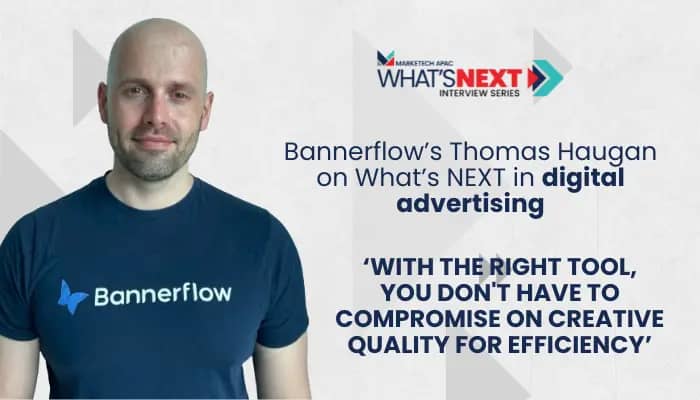Producing and scaling paid and owned media creatives often involves inefficiencies, resulting in high costs, suboptimal creative output, and challenges in maintaining brand governance at scale. Time-intensive development, the demand for multiple ad formats, and resource constraints can overwhelm marketing teams, especially when specialised design tools are required.
Fragmented creative processes across regions further disrupt brand consistency, particularly during rebranding efforts. Manual workflows from creative to publishing take considerable time, and every time a campaign needs to be updated, the entire process has to be repeated. Adding to the challenge, some platforms inflate costs by misclassifying standard HTML5 banners as rich media. Addressing these pain points is essential to streamline workflows, reduce costs, and ensure unified brand communication.
This case study delves into how Bannerflow enabled the holiday lifestyle brand Club Med to overcome creative management challenges, streamline processes and achieve cost-effective solutions for cohesive and efficient brand communication.
The Challenge
In 2023, Club Med launched a new brand positioning and campaign while expanding across East and South Asia Pacific (ESAP). Creative management challenges emerged as local markets independently developed paid media creatives, leading to inefficiencies and inconsistencies. The process was time-consuming, with social media ads requiring multiple formats and programmatic displays demanding numerous permutations.
Without specialist tools and expertise, marketing teams struggled to balance creative production and their core responsibilities. These fragmented processes disrupted the rollout of Club Med’s new global brand identity. Additionally, the existing Creative Management Platform (CMP) inflated costs by misclassifying standard HTML5 banners as rich media, further straining budgets, and was not flexible enough to meet their cross-channel needs.
The Objective
Club Med’s primary goal was to implement a centralised, efficient, and user-friendly CMP that could:
- Simplify and accelerate creative production to meet diverse ad format requirements across a variety of channels
- Enable marketing managers to manage creatives without specialised design expertise.
- Ensure brand consistency and governance across 11 ESAP markets.
- Optimise costs associated with creative development and ad serving.
The Solution
To tackle the challenges of creative management, Club Med partnered with Bannerflow to deploy a CMP tailored to the unique demands of the ESAP region. A pilot program was launched across Singapore, Malaysia, and Thailand to evaluate the platform’s capabilities, focusing on creative scaling, user-friendliness, brand consistency, and support for local languages.

The implementation began with establishing a centralised regional library of brand assets within Bannerflow, ensuring all markets had access to materials aligned with Club Med’s global brand identity. Ten standardised creative templates were then developed and deployed across the region, streamlining the creative process while maintaining visual consistency. Direct integrations with ad networks like Google’s DV360 and Meta Ads Manager further simplified the publishing process, reducing operational complexities.
To maximise efficiency, Club Med provided training to marketing managers, enabling them to independently produce high-quality creatives without requiring specialised design skills. This approach empowered local teams while maintaining cohesive brand governance across all markets.
The Results
The initiative exceeded expectations, prompting a regional rollout across 11 ESAP markets, including Japan, Korea, Hong Kong, and Australia. This expansion showcased the effectiveness of Bannerflow’s platform in streamlining creative management while addressing the unique demands of diverse markets.
Significant time savings were achieved, halving creative production time across the region. Marketing teams saved 204 hours of manual work and were able to produce twice as many ad sizes without requiring additional resources. This efficiency allowed teams to focus on strategic priorities rather than routine tasks. In total, 312 man-hours were saved, and the potential freelancer costs in the ESAP markets were reduced.
Cost efficiency was another standout result, with ad-serving expenses reduced by 80% and the elimination of the need for external support to create sufficient HTML5 ads for the region. The removal of rich media fees for standard HTML5 banners played a pivotal role in cutting costs, making the platform a financially sustainable solution.

Brand governance was made simpler and brand consistency improved significantly, driven by a centralised asset hub that ensured uniformity across all markets. Additionally, the ability to share creatives across regions fostered better collaboration and alignment, ensuring the brand’s global identity was upheld.
Moreover, ads were distributed directly from Bannerflow to the media buying platforms, enabling the marketing team to update campaigns with ease through a live connection. This streamlined workflow not only improved campaign performance but also made the process more efficient, benefiting both the marketing team and their media agency.
Lastly, creative output soared, with ESAP markets generating 510 creative assets across 51 campaigns, which has since scaled into thousands of creatives. Additionally, 36 diverse regional templates were developed and released, and 78 creative sets were created across the ESAP markets. These assets supported various initiatives, including tactical promotions, sale openings, and always-on marketing efforts, demonstrating the platform’s capability to handle high-volume demands effectively while enabling local market adaptations as required.
***
Club Med’s success in ESAP inspired a global rollout of Bannerflow in 2024, unifying creative management across all regions, including Europe and North America. This marked a transformative leap in efficiency, cost savings, and brand cohesion—elevating Club Med’s creative operations to new heights.


